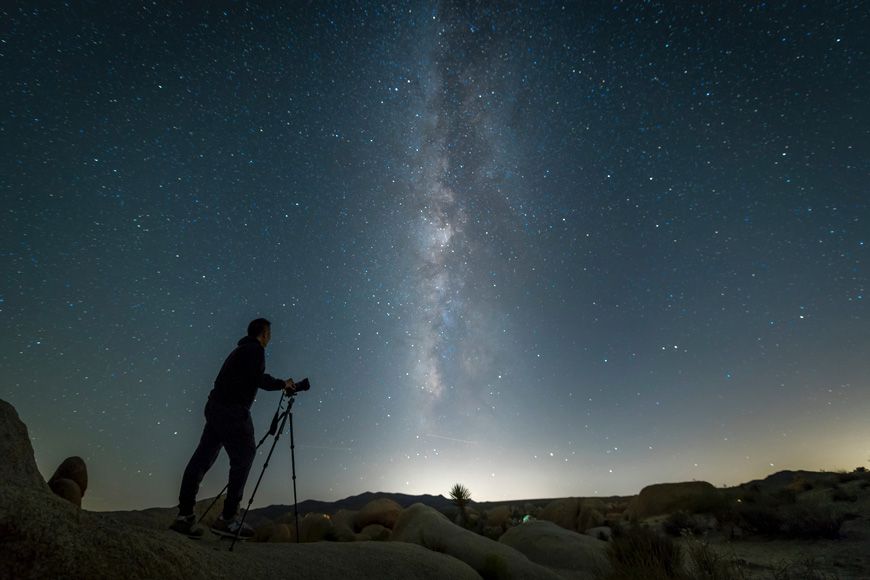How to shoot in low light conditions?

Capturing photographs in low light conditions can be challenging. The lack of adequate lighting can make it difficult to get the desired exposure, resulting in dark and blurry photos. However, with the right techniques and equipment, you can take stunning pictures even in low light situations. In this blog, we'll share some tips on how to shoot in low light conditions.
Use a wide aperture
Using a wide aperture can help you capture more light, resulting in brighter and more vivid images. A wide aperture also creates a shallow depth of field, which can be ideal for portraits or isolating your subject from the background.
Increase your ISO
Increasing your camera's ISO can make the sensor more sensitive to light, allowing you to capture brighter images in low light conditions. However, be aware that increasing the ISO can also introduce noise or grain into your photos, so find the optimal balance between brightness and image quality.
Use a tripod

In low light conditions, the shutter speed is often slow, resulting in blurred images due to camera shake. Using a tripod can help you keep your camera steady, resulting in sharper and more focused images.
Utilize your camera's manual mode
Shooting in manual mode can give you more control over your camera's settings, allowing you to adjust the aperture, shutter speed, and ISO to your desired settings.
Add external lighting

If possible, consider adding external lighting, such as a flash or portable LED light. This can help you illuminate your subject and create a more balanced exposure.
Shoot in RAW format
Shooting in RAW format can give you more flexibility in post-processing, allowing you to adjust the exposure and other settings without sacrificing image quality.
By utilizing these tips and techniques, you can capture stunning images even in low light conditions. Remember to experiment with different settings and practice to find the best approach for your photography style. Happy shooting!
Conclusion
Shooting in low light can be challenging, but with the right techniques, it's possible to capture stunning images. Use a wide aperture, increase ISO, utilize a tripod, shoot in manual mode, add external lighting, and shoot in RAW format. Experiment to find what works for you. With practice, you can master low light photography and capture stunning images in any condition.
FAQs
What are the best camera settings for low light photography?
The best camera settings for low light photography vary depending on the specific situation, but some general tips include using a wide aperture (low f-number), a slow shutter speed, and a high ISO.
What is the best aperture for low light photography?
The best aperture for low light photography is a wide aperture, such as f/2.8 or f/1.8. This will allow more light to enter the camera, which will help you to get a brighter exposure.
What is the best shutter speed for low light photography?
The best shutter speed for low light photography depends on the specific situation. In general, you will need to use a slow shutter speed to allow more light to enter the camera. However, you will need to be careful not to use a shutter speed that is so slow that your photos are blurry.
What is the best ISO for low light photography?
The best ISO for low light photography is a high ISO, such as 1600 or 3200. This will allow the camera to capture more light, but it will also increase the noise in your photos.
How can I avoid camera shake in low light photography?
There are a few things you can do to avoid camera shake in low light photography. First, use a tripod to keep your camera steady. Second, use a shutter speed that is fast enough to freeze the action. Third, use a higher ISO to reduce the amount of noise in your photos.
What are some tips for taking better low light photos?
Here are some tips for taking better low light photos:
- Use a wide aperture (low f-number).
- Use a slow shutter speed.
- Use a high ISO.
- Use a tripod.
- Use a shutter release cable.
- Use image stabilization.
- Shoot in RAW.
- Edit your photos in post-production.
What are some common mistakes to avoid when shooting in low light?
Here are some common mistakes to avoid when shooting in low light:
- Using a shutter speed that is too slow.
- Using a high ISO without using a tripod.
- Not using image stabilization.
- Not shooting in RAW.
- Not editing your photos in post-production.
What are some creative techniques that can be used for low light photography?
Here are some creative techniques that can be used for low light photography:
- Using long exposures to capture motion blur.
- Using a flash to add drama to your photos.
- Using light painting to create interesting effects.
- Using natural light to create beautiful portraits.
What are some of the challenges of shooting in low light?
Here are some of the challenges of shooting in low light:
- The lack of light can make it difficult to get a good exposure.
- Camera shake can be a problem when using slow shutter speeds.
- Noise can be a problem when using high ISOs.
What are some of the benefits of shooting in low light?
Here are some of the benefits of shooting in low light:
- You can capture photos that would not be possible in bright light.
- You can create dramatic and atmospheric photos.
- You can add a sense of mystery and intrigue to your photos.

